We perform the work together with an assistant on an inspection pit or lift
Brake bleeding is necessary when replacing brake fluid, as well as to remove air that has entered the hydraulic drive during repair or replacement of individual components of the brake system.
First, we remove air from one circuit of the system, then from the other.
We begin bleeding from the right rear wheel cylinder.

Remove the cap from the bleed nipple of the rear brake cylinder
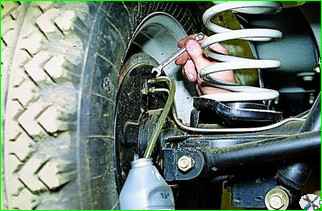
Put a transparent hose on the nipple, lowering its free end into the vessel
The assistant presses the brake pedal three or four times at intervals of one or two seconds and holds the pedal pressed. Using an 8 mm spanner, loosen the bleed nipple by 1/2–3/4 of a turn.
This will force some of the brake fluid and air into the container, and the pedal will drop to the floor.
Air bubbles are clearly visible in the transparent hose.
Tighten the bleed nipple and repeat this operation until the air bubbles stop escaping completely.
When removing air from the system, monitor the fluid level in the master cylinder reservoir and top it up if necessary.
Bleed the left rear wheel cylinder in the same way.
Then remove air from the upper nipples of the left and right cylinder blocks of the front wheels.
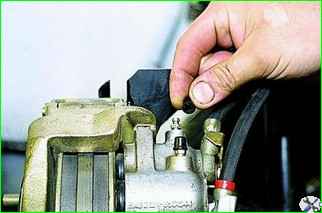
Remove the cap of the upper fitting of the brake cylinder block of the front wheel (the wheel is removed for clarity).
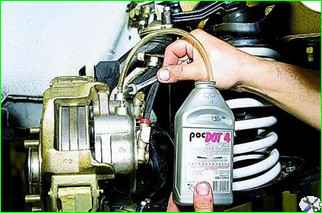
Bleed the front brake cylinders of one circuit.
To bleed the other circuit, remove air from the lower fittings of the front wheel cylinder blocks in any order.
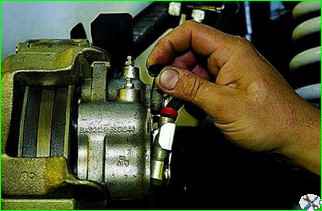
Remove the cap from the lower fitting of the front wheel brake cylinder block.
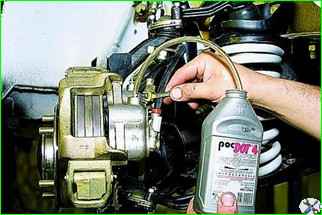
Bleed another circuit.
If there is no air in the system, the brake pedal should be "hard", i.e. when pressed, it should not travel more than half the distance to the floor





